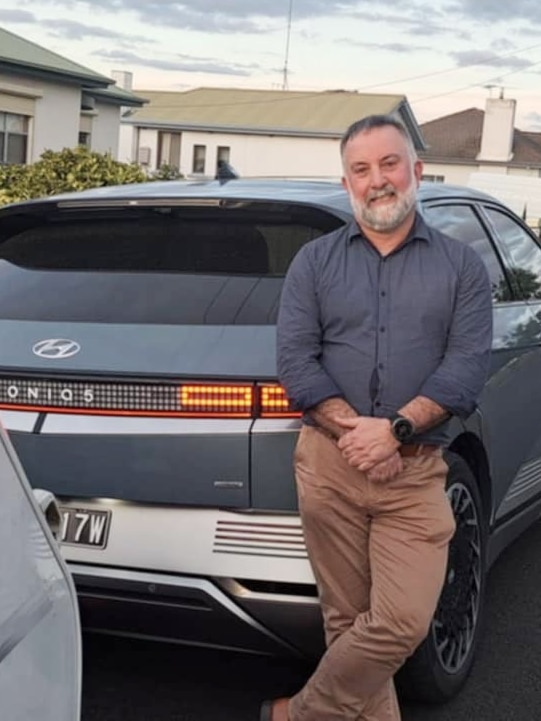In short:
The number of electric vehicles registered in South Australia’s regional areas has increased along with more charging points.
Small businesses are seeing visitors come in while waiting for their car to charge.
What’s next?
A new charging network funded by the SA government is almost complete.
People in regional South Australia are continuing to buy electric cars as more chargers are installed outside of Adelaide to calm range anxious drivers.
A new charging network with more than 500 electric vehicle chargers is almost complete, leaving only a few gaps of more than 200 kilometres between towns with top-up points outside of Adelaide.
According to figures from carloop, which collects data on electric car use, the number of electric vehicles registered in regional areas of South Australia has jumped from 125 in 2021 to 2,158 today.
Teacher Chris Jordan is one of the 163 people who owns an electric vehicle in Mount Gambier and the surrounding smaller towns.
He hopes it will save him money in the long term, even if the up-front cost was high.
“I guess I often do things that are environmental, especially if it saves me some money,” Mr Jordan said.
“I’ve put quite a lot of solar on the house and to be able to charge it certainly saves money as well as being better environmentally.”
| Towns with the most electric vehicles | Registrations |
|---|---|
| Mount Barker | 127 |
| Mount Gambier | 99 |
| Victor Harbor | 94 |
| Strathalbyn | 86 |
| Murray Bridge | 84 |
| Nuriootpa | 67 |
Charging network increasing use
The Royal Automobile Association of South Australia (RAA) has almost completed installing a network of more than 500 chargers across about 140 sites, using a $12 million grant from the state government.
Most of the chargers are in regional areas, with the largest hub at Mount Gambier, where there are nine plugs.
The organisation says the network has been used for more than 50,000 charging sessions since it was launched early last year, with about 20 per cent of users in regional areas from interstate.
The RAA’s program director for electric vehicle charging, Andrew Howard, said the chargers were being used more often, in line with the uptake in electric vehicles, and people had noticed they were reliably maintained.
“With the increase in uptake of EVs, we’re certainly seeing an increase in the usage of the network — roughly a 5 to 10 per cent increase every month,” Mr Howard said.
He said about 70 per cent of members in surveys cited range anxiety and a lack of chargers as a concern when considering an electric car.
“[This] really gives people the opportunity to select an EV if they choose and gives them the confidence to experience regional SA and unlock these great regions in our state,” he said.
The most popular RAA charging sites outside of Adelaide so far have been Mount Barker, Nuriootpa and Port Wakefield, all within an hour’s drive of the city.
Many other chargers are operated by Tesla or privately owned by accommodation providers.
Boost for small businesses
Recharging an electric car can typically take half an hour or more on even the fastest chargers.
That extra stopping time is good news for tourist-focused business owners like Brad Scott, who turns recyclable waste into homewares like bowls and key rings at his shop in Robe.
He has leased space at the front of his business to the RAA for three chargers, although none of them can be the fastest version because of limits to the power supply in Robe.
He first installed an electric vehicle charger outside his business in 2019 but no-one used it for the first year it was there.
“It’s now really starting to pick up, we would have had 40 or 50 in the last couple of months, really,” he said.
“People come down here, charge their car; they can walk in for 20 minutes and have a look around inside.”
High cost initially
The Wattle Range Council bought an electric car for its chief executive Ben Gower last year as part of a trial to see how effective they could be in its fleet.
He said it had gone well, apart from when he hit a kangaroo.
There have also been sceptics among elected members.
“The up-front capital cost was a little more than for a conventional vehicle … but the operating costs far outweigh that capital investment over the four-year life span we expect to be operating this vehicle,” he said.
Across South Australia, there are just over 11,000 electric vehicles registered, compared with about 660,000 using fossil fuels.
Get our local newsletter, delivered free each Friday




